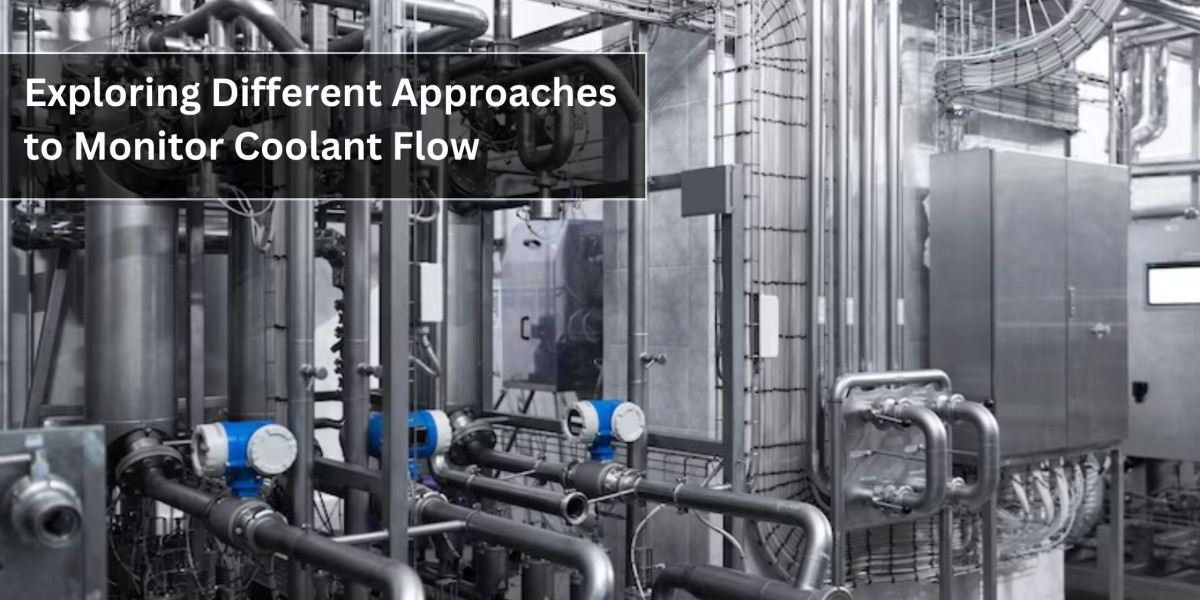The coolant flow is pivotal in maintaining optimal operating conditions in industrial machinery and automotive systems. Whether regulating engine temperatures or ensuring proper cooling in manufacturing processes, monitoring coolant flow is crucial for efficiency and longevity. This comprehensive exploration delves into various methodologies and technologies companies like Proteus Industries employ to monitor coolant flow effectively. Additionally, we'll touch upon the role of products like Versachem Muffler Weld in enhancing system performance and durability.
Understanding the Importance of Coolant Flow
Coolant is a lifeline for numerous systems, dissipating heat and preventing overheating that can lead to catastrophic failures. Efficient coolant flow ensures heat is effectively carried away from critical components, maintaining optimal operating temperatures. With proper coolant flow monitoring, these systems are protected from inefficiencies, breakdowns, and repairs.
The Role of Proteus Industries in Coolant Flow Monitoring
Proteus Industries stands at the forefront of developing innovative solutions for coolant flow monitoring across various industries. Leveraging advanced technologies and years of expertise, Proteus offers a range of flow monitoring systems designed to meet diverse needs. From simple inline flow meters to sophisticated digital monitoring solutions, Proteus caters to automotive, aerospace, manufacturing, and beyond requirements.
Versachem Muffler Weld: Enhancing System Integrity
While coolant flow monitoring is vital, ensuring the structural integrity of components is equally important. Versachem Muffler Weld, a premium product known for its exceptional bonding strength, is significant in reinforcing exhaust systems and other critical components. By providing a durable seal, Versachem Muffler Weld contributes to overall system reliability, reducing the risk of leaks and failures.
Methods of Coolant Flow Monitoring
1. Inline Flow Meters:
One of the most common methods is inline flow meters, which measure the coolant flow passing through a system. These meters offer real-time data and are often integrated into control systems for automated monitoring and adjustment.
2. Ultrasonic Flow Sensors:
These sensors utilize ultrasonic technology and measure coolant flow by analyzing the speed of sound waves passing through the fluid. They are noninvasive and ideal for applications where maintaining fluid integrity is crucial.
3. Magnetic Flow Meters:
Employing electromagnetic principles, magnetic flow meters detect coolant flow by measuring the voltage generated as the conductive fluid passes through a magnetic field. These meters are highly accurate and suitable for various industrial environments.
4. Thermal Dispersion Flow Sensors:
Operating on the principle of thermal conductivity, these sensors measure coolant flow by detecting changes in temperature as the fluid flows past a heated element. Thermal dispersion flow sensors are reliable and well-suited for harsh operating conditions.
5. Vortex Shedding Flow Meters:
Vortex-shedding flow meters provide accurate flow measurements by analyzing the frequency of vortices formed as coolant flow passes by an obstruction. These meters are durable and suitable for high-pressure applications.
Read More: A Step-by-Step Guide to Using a Water Power Welder
Conclusion
In conclusion, adequate coolant flow monitoring is essential for maintaining industrial systems' performance, efficiency, and longevity. Companies like Proteus Industries offer a range of innovative solutions to address diverse monitoring needs, ensuring optimal operation and minimizing the risk of costly downtime. Products like Versachem Muffler Weld enhance system integrity and improve overall reliability and performance. By embracing advanced technologies and quality products, industries can safeguard their operations against the detrimental effects of inadequate coolant flow.
FAQs
1. How does proper coolant flow benefit industrial machinery?
Proper coolant flow prevents overheating, reduces wear and tear, and extends the lifespan of critical components in industrial machinery.
2. Can Versachem Muffler Weld be used in high-temperature applications?
Versachem Muffler Weld is formulated to withstand high temperatures, making it suitable for exhaust systems and other hot environments.
3. What are the consequences of inadequate coolant flow?
Insufficient coolant flow can lead to overheating, decreased efficiency, component damage, and system failures.
4. How often should coolant flow be monitored in industrial settings?
Coolant flow should be monitored regularly as part of routine maintenance, with frequency depending on the specific application and operating conditions.
5. Are Proteus Industries' flow monitoring systems customizable?
Yes, Proteus Industries offers customizable flow monitoring solutions tailored to the individual requirements of different industries and applications.
6. Can magnetic flow meters be used with corrosive fluids?
Thanks to their non-intrusive design, magnetic flow meters are compatible with many fluids, including corrosive liquids.
7. What is the typical lifespan of Versachem Muffler Weld bonds?
Versachem Muffler Weld bonds are designed to be durable and long-lasting, providing reliable performance over an extended period.
8. How do thermal dispersion flow sensors handle variations in fluid viscosity?
Thermal dispersion flow sensors are unaffected by changes in fluid viscosity, ensuring consistent and accurate measurements regardless of liquid properties.
9. Do ultrasonic flow sensors require regular calibration?
Depending on the specific model and application, ultrasonic flow sensors may require periodic calibration to maintain accuracy.
10. Are vortex-shedding flow meters suitable for low-flow applications?
Vortex-shedding flow meters can accurately measure coolant flow even at low flow rates, making them versatile for various operational conditions.



